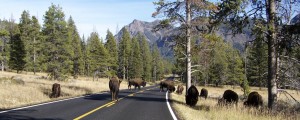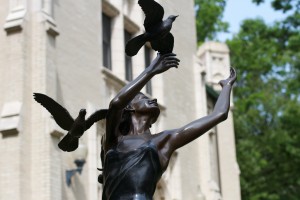When someone hits a roadblock in practice, it often takes the form of, “things aren’t supposed to be this way!” Maybe it’s a lack of concentration. Perhaps sleepiness. Maybe constant incessant thinking. There are two options in cases like this–one is to make modifications to practice (like standing up or opening the eyes, in the case of sleepiness, or focusing on a very specific object like the breath, in order to reestablish concentration). The other option, which I’d like to address here, is to consider–what if this “roadblock” isn’t actually a problem, but rather, just another sort of experience to investigate?
In a moment when clarity is low, why not get curious about the experience of being “unclear”? What does unclear feel like in the body? Is it heavy? Is there sleepiness in it? Irritation? Are there other physical body sensations? All of a sudden, you might find that you have become quite clear about the experience of being “unclear,” simply by virtue of examining it rather than resisting it.
…Similarly with tiredness, irritation, other afflictive emotions.
And with thoughts–it can be useful to examine them in this same way. Not looking at the content (i.e. what the thoughts are about), but rather–are these thoughts auditory or visual, or both? Where in my head do they seem to be occurring? Are they loud or soft? Bright or dim? What emotions are being generated (or covered up!) by these thoughts? Where do I feel those emotions in my body?
The bottom line is, when we are looking at the present moment, we are looking at the senses. One of my teachers, Shinzen Young, likes to divide them up into hearing, seeing, and feeling (just for the sake of simplicity). A thought is just made up of hearing (internal dialog) and/or seeing (internal images). An emotion is usually made up of feeling (in the body), though there is often a thought (hearing + seeing) running alongside. So as long as we are looking at the component senses which make up an experience (e.g. examining their texture, shape, size, intensity, motion or stability, etc.), then it doesn’t matter what experience we are looking at! We are “in the moment.” We are “being mindful.” And “roadblocks” are simply grist for the mill.



